Season’s Eatings: What to cook and eat in July
From the versatile aubergine to the sweet juiciness of peaches, discover how to select, prepare and savour these seasonal delights through an array of dishes that showcase the best of summer’s flavours
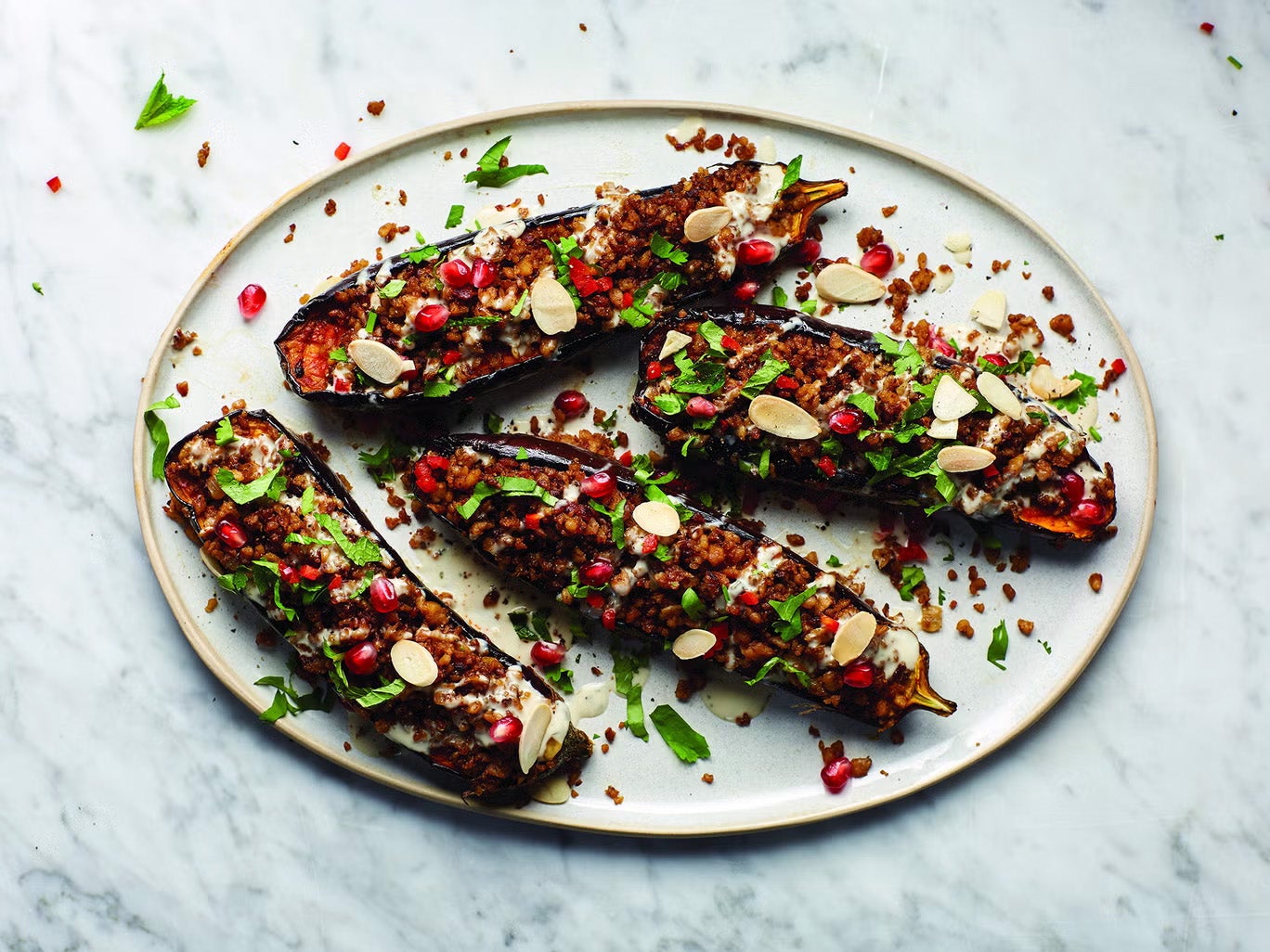
Your support helps us to tell the story
From reproductive rights to climate change to Big Tech, The Independent is on the ground when the story is developing. Whether it's investigating the financials of Elon Musk's pro-Trump PAC or producing our latest documentary, 'The A Word', which shines a light on the American women fighting for reproductive rights, we know how important it is to parse out the facts from the messaging.
At such a critical moment in US history, we need reporters on the ground. Your donation allows us to keep sending journalists to speak to both sides of the story.
The Independent is trusted by Americans across the entire political spectrum. And unlike many other quality news outlets, we choose not to lock Americans out of our reporting and analysis with paywalls. We believe quality journalism should be available to everyone, paid for by those who can afford it.
Your support makes all the difference.July marks a vibrant period in the UK when a variety of fresh ingredients come into their prime, offering chefs and home cooks alike a bounty of options to enhance their culinary creations.
From the deep purple hues of aubergines to the robust textures of broad beans, the season’s offerings are both diverse and flavourful. We’ve delved into five such ingredients that are not only peak in freshness during July but also bring a unique set of flavours and culinary potentials to the table.
Aubergines, with their meaty texture and ability to absorb flavours, make them a favourite in dishes from Mediterranean to Middle Eastern cuisines. Broad beans, a staple in British gardens, are celebrated for their earthy taste and versatility.
Kohlrabi, an often underappreciated member of the cabbage family, provides a crisp, mild flavour that works wonderfully both in raw salads and cooked dishes.
Peaches, with their sweet, succulent flesh, are perfect for both savoury dishes and desserts, embodying the essence of summer. Lastly, thyme, this aromatic herb, infuses a subtle earthiness into dishes, which is especially good with meats and stews.
Aubergine
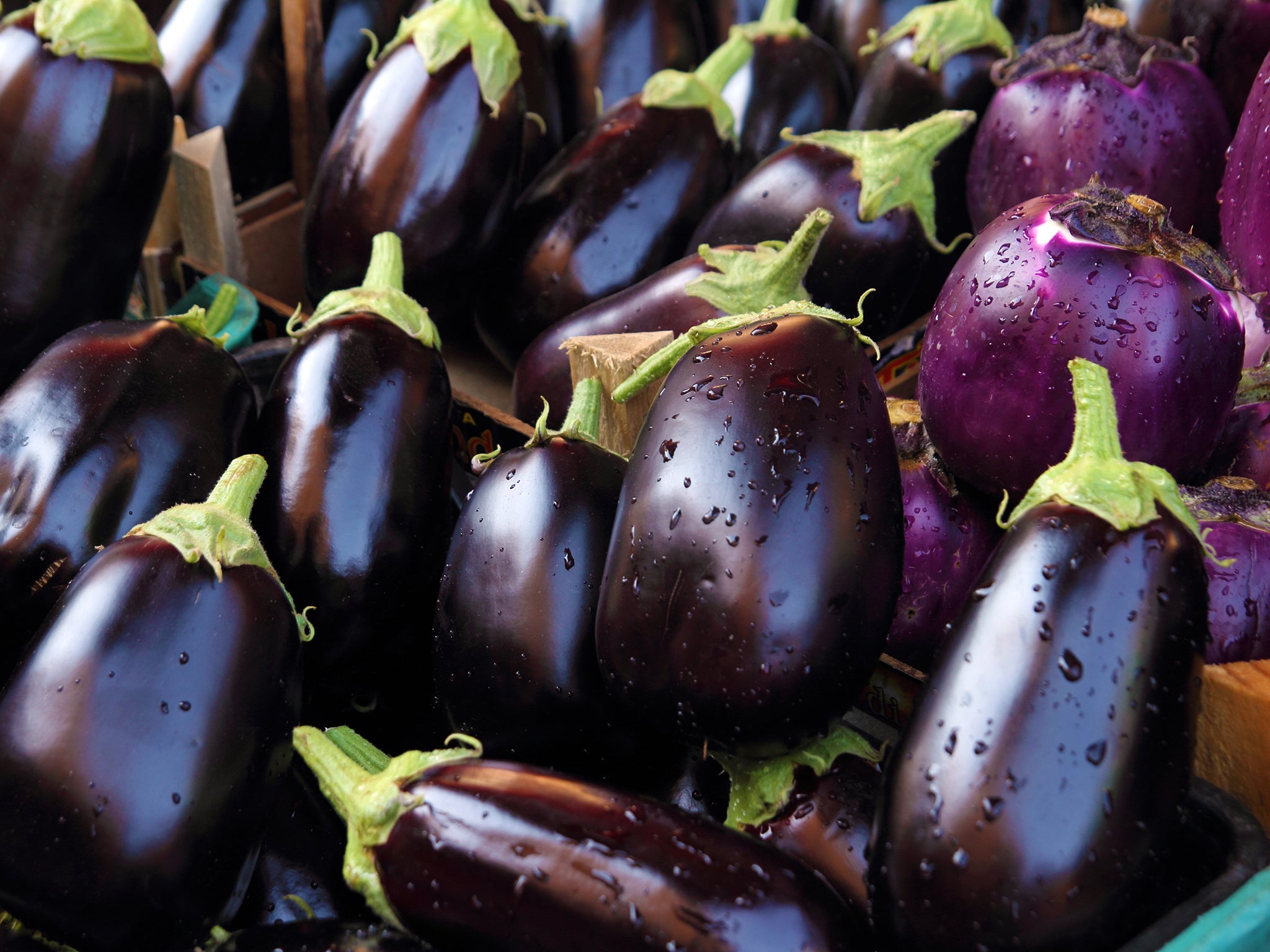
Aubergines, known to some as eggplants, are particularly sumptuous during their peak season in the UK, which stretches from late May through to mid-October. Native to Southeast Asia but now cultivated globally, aubergines are technically fruits – specifically berries – though they are commonly utilised as vegetables in cooking. Their varieties are as diverse as the cuisines that employ them, ranging from the large, deep purple types favoured in Mediterranean dishes to the smaller, ivory-coloured versions popular in the United States and Australia.
The preparation of aubergines is straightforward. To maintain their colour, they should be cut just before cooking. While older recipes often recommended salting slices of aubergine to mitigate bitterness, this step can generally be skipped with modern, less bitter varieties, unless frying is intended. Aubergines are known for their ability to absorb oil, and salting beforehand can help reduce the amount of oil they soak up during cooking.
Culinary uses of aubergine are varied and vibrant. It is a staple in dishes such as Greek moussaka and French ratatouille, where it is baked to perfection. In Middle Eastern cuisine, aubergines are roasted and blended into baba ganoush, a creamy dip enhanced with garlic, tahini, lemon juice, and spices. They can also be sliced thinly and fried to create delightfully crispy aubergine chips.
To store, aubergines should be kept in the fridge’s salad drawer, where they will remain fresh for a few days. When selecting aubergines, opt for those with firm, smooth skins and bright green stalks, as these characteristics often indicate freshness and quality. The fruit should feel relatively heavy for its size, ensuring a dense, meaty texture perfect for a variety of dishes.
Spicy stuffed aubergines
A cheeky twist on the classic dish imam biyaldi, these stuffed aubergines are to die for.
Imam biyaldi roughly translates to “the priest fainted”, and folklore tells us that a priest was so impressed by the dish upon first eating it that he swooned.
Our version is definitely delicious enough to make a holy man topple… The mince and onion stuffing browns brilliantly and packs a spicy punch, while the traditional tahini and mint dressing cools the whole thing down. If you’re a fan of aubergine, this is a must-try! We prefer to use a new, tasty brand of plant-based mince for this, available chilled in most good supermarkets.
Recipe from: Speedy BOSH! by Ian Theasby and Henry Firth
Serves: 2
Ingredients:
2 aubergines
2 tbsp harissa paste
Handful of flaked almonds
1 fresh red chilli
Handful of fresh mint
Handful of fresh coriander
80g pomegranate seeds
Salt
For the stuffing
2 tbsp olive oil
½ onion
200g soya mince
2 tsp ground cinnamon
2 tsp ground coriander
2 tsp ground cumin
For the tahini dressing
100g tahini
1 tbsp dried mint
100ml water
1 lemon
Salt
Method:
1. Preheat grill to max. Line a baking tray. Frying pan on a medium heat. Kettle boiled. Whisk.
2. Grill the aubergine: Cut the aubergines in half lengthways and lay them flesh-side up on the baking tray. Score the flesh in a crisscross pattern, being careful not to pierce the skin. Brush the scored flesh with the harissa paste and sprinkle with salt. Place under the hot grill to cook until soft, about 13-15 minutes.
3. Meanwhile, cook the stuffing mixture: Add the olive oil to the hot frying pan. Peel and dice the onion and add it to the pan. Cook for 4 minutes until soft.
4. While the onions are cooking: Hydrate the soya mince according to the packet instructions. Drain, pressing the mince with the back of a spoon to remove excess water. Add the mince and the ground spices to the onions and cook until golden and fragrant. Taste and season to perfection.
5. Serve: Take the tray out of the oven and transfer the aubergines to a serving dish. Tip the flaked almonds onto the tray and toast very briefly under the grill. Finely slice the chilli and tear the leaves from the fresh herbs. Tip the spiced stuffing mixture over the aubergines. Drizzle with the tahini dressing. Scatter over the herbs, chilli, pomegranate seeds and toasted flaked almonds, then serve.
‘Speedy BOSH!’ by Ian Theasby and Henry Firth is out now : £16.99
Broad beans
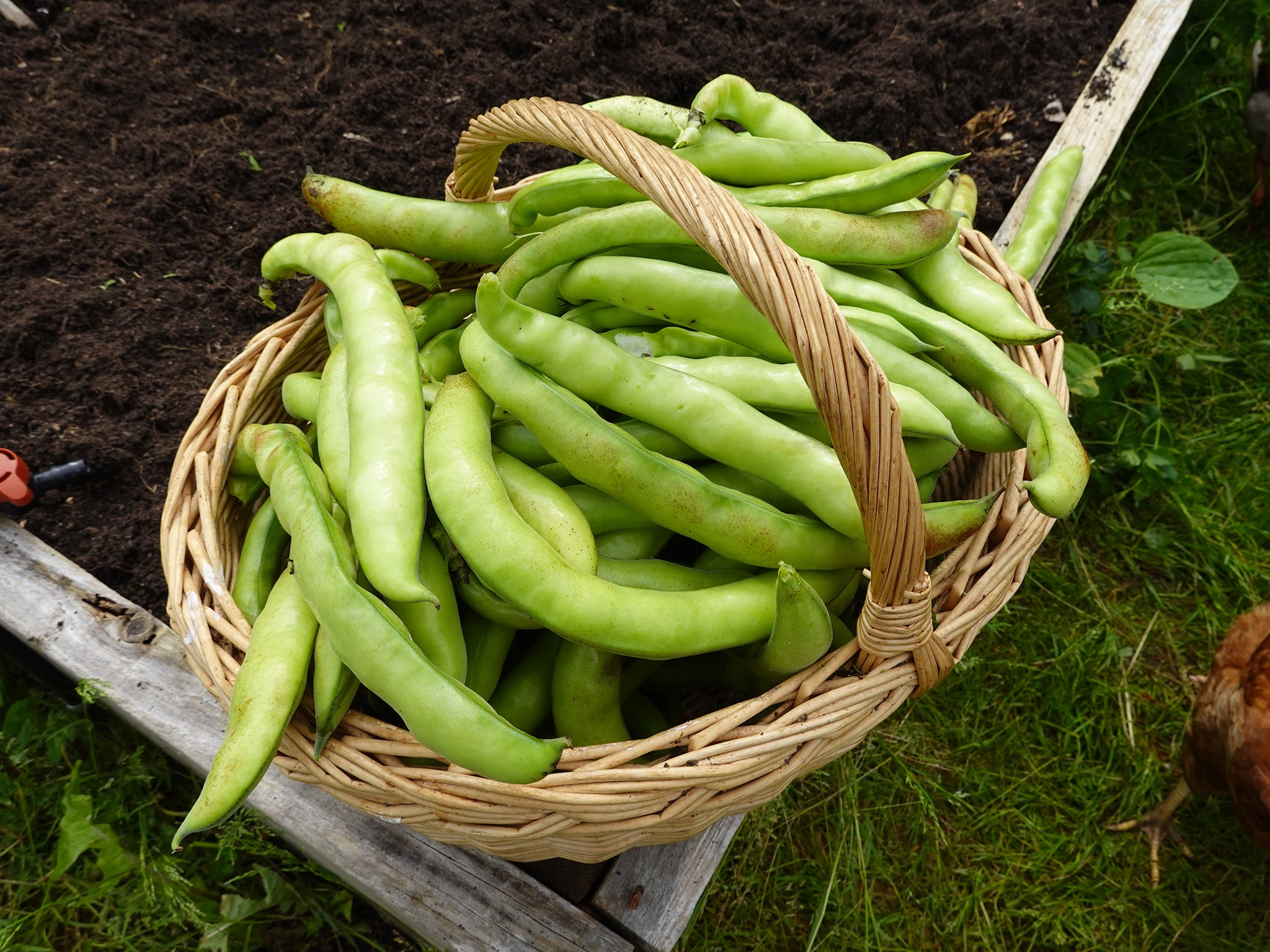
Broad beans, also known as fava beans, are a robust and versatile member of the legume family. They thrive in a variety of soils and climates, making them a popular choice for growers. Rich in protein and carbohydrates, broad beans also offer vitamins A, B1 and B2. These beans are in their prime in the UK from late June to mid-September, offering a taste that is deeply embedded in the culinary traditions of the region.
Preparing broad beans involves removing them from their thick, velvety pods. This is done by slitting the pod along its seam and pushing the beans out with your thumb. For a finer texture, especially if the beans are large and mature, a second podding – or double podding – is recommended. This process involves blanching the beans for two minutes, cooling them under cold water, and then removing the thin, leathery skin that encases each bean. While somewhat laborious, this method reveals the beans’ creamy, sweet interior, enhancing their natural flavour.
Culinary uses for broad beans are varied. Once double podded, they can be pureed with feta or hummus to create a rich, flavorful dip. Alternatively, they can be added whole to dishes like risottos, soups and salads, or paired with mozzarella or burrata in a chilli and mint vinaigrette for a refreshing summer salad.
For storage, broad beans should be kept in a perforated bag in the fridge, where they can stay fresh for up to five days. Blanched beans can also be frozen for up to three months. When buying broad beans, look for pods that are firm, crisp, and devoid of any soft spots or air pockets, ensuring they are as fresh as possible.
Pappardelle with shaved asparagus, broad beans, marjoram and pea purée by Geoffrey Smeddle
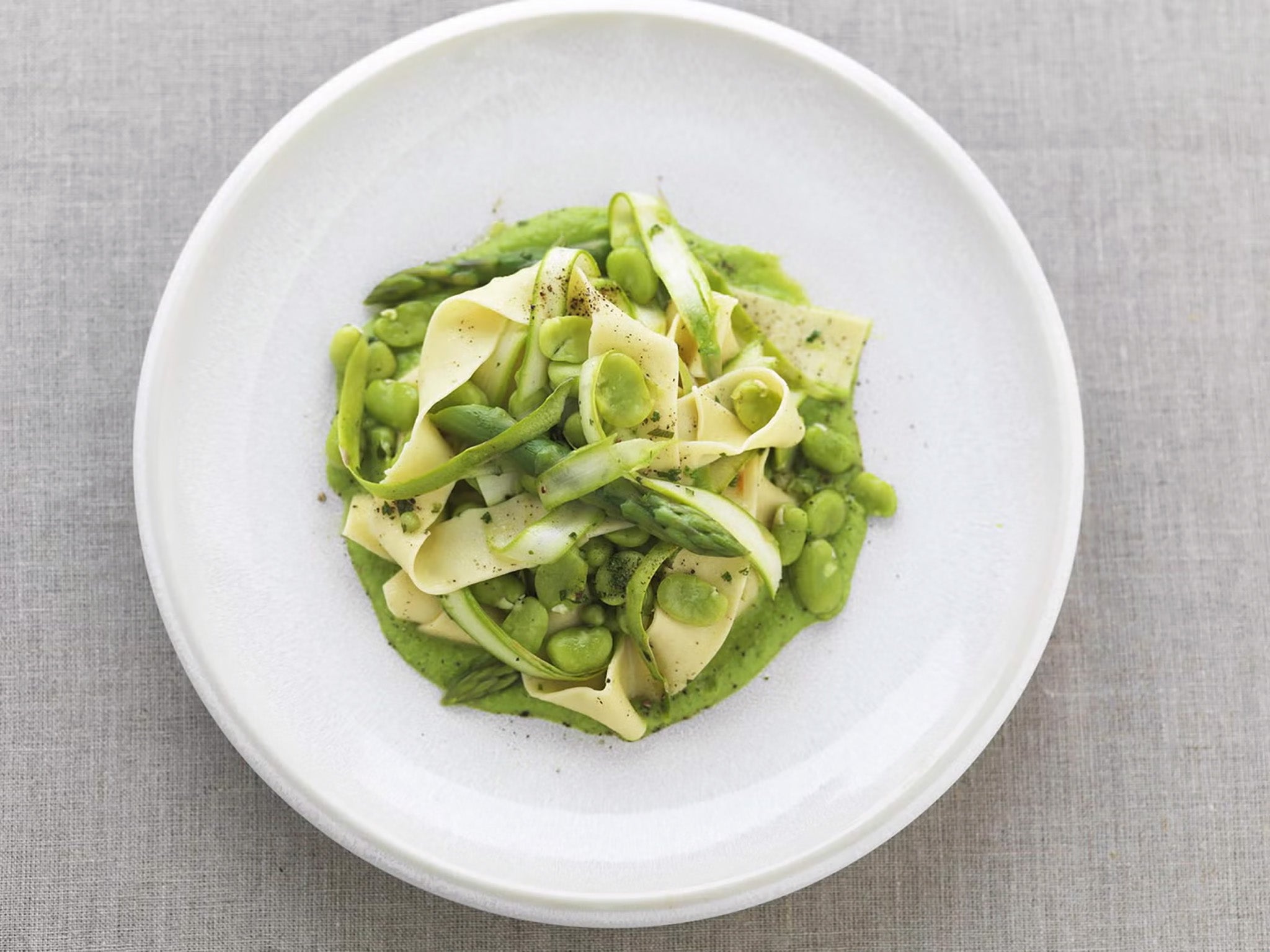
Recipe from: Monica Shaw, Great British Chefs
Asparagus and pappardelle are a winning combination, married perfectly together in this simple recipe from Geoffrey Smeddle. Together with earthy broad beans and fresh marjoram, this pasta dish is a perfect way to celebrate the days of spring and early summer. To serve, add some shaved cheese on top; Parmesan and Pecorino Romano make lovely options, as does British Old Winchester if you’d like to keep this recipe vegetarian.
Ingredients:
500g fresh peas in the pod
1 pinch sugar
150ml double cream
500g fresh broad beans, still in the large outer pod
2 bunches asparagus
320g pappardelle
10g fresh marjoram
Salt
Black pepper, freshly ground
Olive oil
Method:
1. Make the pea purée in advance. Shell the peas and discard the pod. Bring a pan of salted water to the boil and cook the peas for three minutes. Drain, reserving one cup of the cooking water, and place into ice water.
2. Place the peas in a blender with some of the cooking water, add a pinch of salt and sugar then process to a purée. Add just enough double cream to help it process, then set aside. Shell the broad beans from the outer pod then cook in boiling salted water for one minute before draining and refreshing in ice-cold water. Once cold, drain and pop off the outer pod from each bean then set aside.
3. Set aside six spears of asparagus per person. Cut off the tips and keep them to use as a garnish. Add the remainder of those spears to the others, which will be used to make ribbons. Trim the woody base from the asparagus – this will be about an inch or so at the base of each spear, which can be reserved for soup.
4. Using a swivel-head peeler and working from the head of the spear to the base, shave ribbons of asparagus and place them in a bowl. Bring a large pan of water and a second smaller one to the boil and salt both well. Gently reheat the pea purée in a small pan, taste for seasoning and set aside in a warm place. Place the pasta in the large pan of boiling water and cook until al dente. Boil the reserved asparagus tips in the smaller pan for four minutes.
5. Drain the pasta when done, reserving a few tablespoons of the cooking water. Return the pasta to the pan, along with the cooking liquid, broad beans, a dash of olive oil, half the asparagus ribbons and half the fresh marjoram. Season with salt and add half the asparagus spear tips. Divide the pea purée between four plates, making a round bed in the centre of each.
6. Pile the pasta in the centre of each then finish with the rest of the shaved asparagus and the asparagus tips. Add one last dash of salt and pepper and then scatter the rest of the marjoram over the top.
Kohlrabi
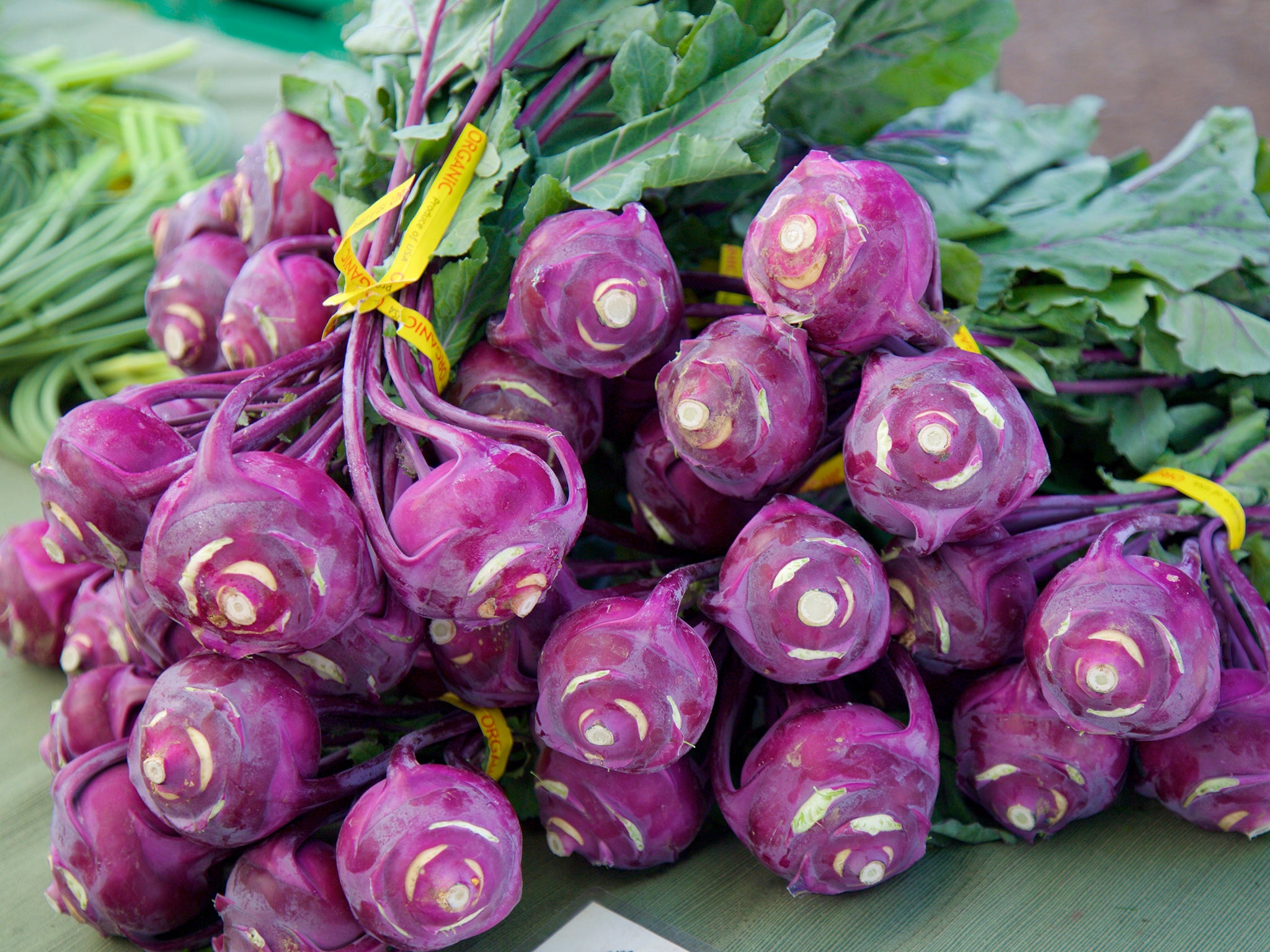
Kohlrabi, a peculiar yet delightful vegetable, is a member of the cabbage family and is in season in the UK from mid-July to mid-November. Its appearance is quite unique, resembling a space capsule with a squat, bulbous body and antenna-like shoots extending outward. The name “kohlrabi” comes from the German words for “turnip” (Kohl) and “cabbage” (Rabi), and its flavour is a mild, sweet blend reminiscent of both, with a crisp, crunchy texture that compares favourably to water chestnuts. Kohlrabi is available in two hues: the more common pale green and a striking, less-common purple.
Preparing kohlrabi is simple and straightforward. Begin by snipping off the leaf stems and trimming the base and top of the bulb. Then, peel it using a potato peeler or a sharp knife, treating it much like you would an apple. Once peeled, the kohlrabi can be sliced thinly, chopped into chunks, or cut into wedges, depending on the intended use.
Cooking methods for kohlrabi are versatile. It can be steamed as a whole bulb for about 12 minutes, stir-fried for up to 6 minutes, or roasted – first steamed for 5 minutes and then roasted in an oven for 45 minutes to deepen its flavour. The leaves are also edible and can be cooked similarly to cabbage, offering a nutritious and tasty addition to a variety of dishes.
For storage, trim the stems and keep kohlrabi in the refrigerator, where it will remain fresh for up to two weeks. When selecting kohlrabi, opt for medium-sized bulbs that feel heavy for their size. The leaves should be crisp and vibrant green. Avoid bulbs that have soft spots or leaves that are yellowing, as these are signs of decay. For those looking for an alternative, turnips provide a similar flavour and texture.
Kohlrabi and peanut stir-fry
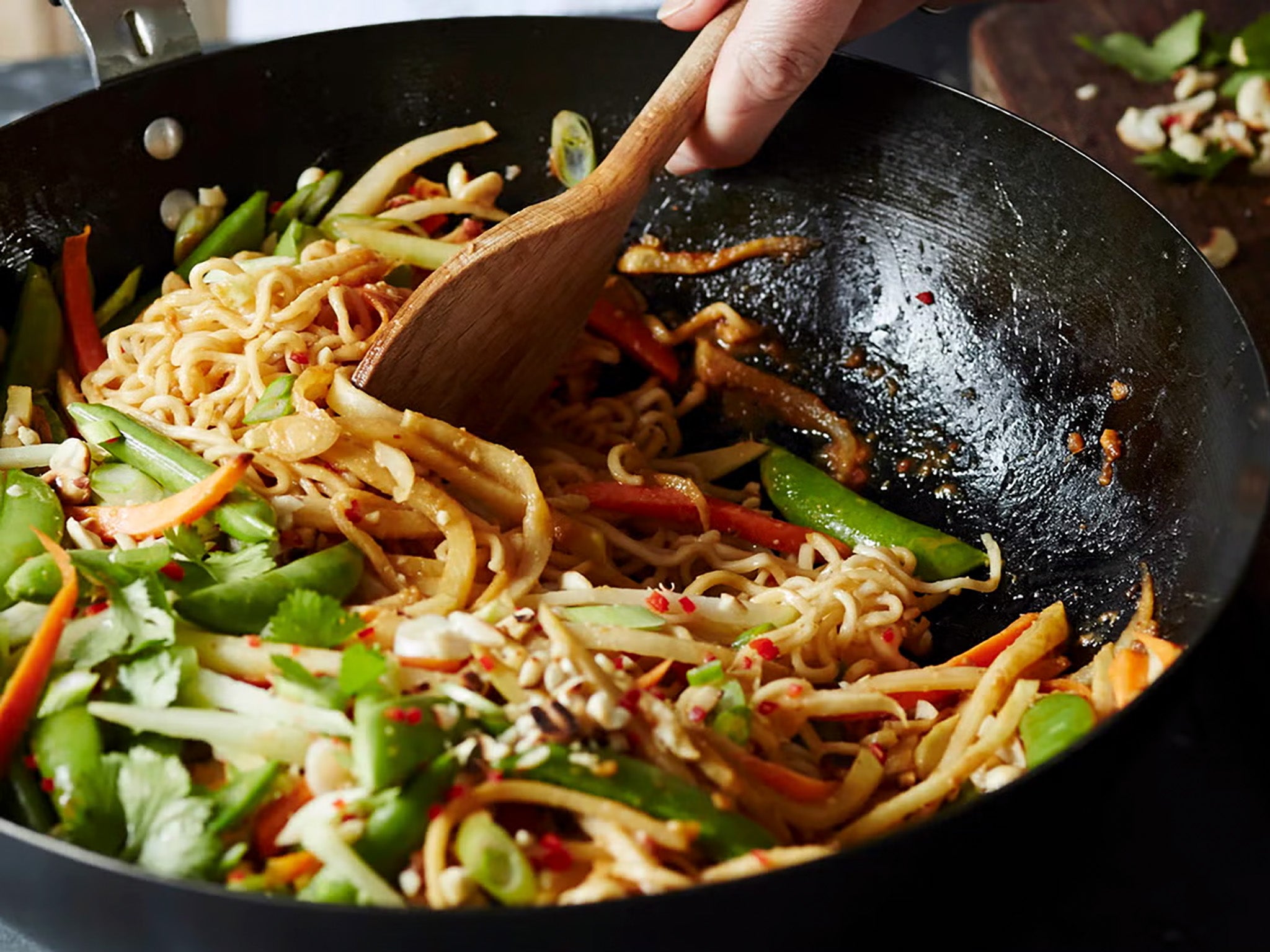
Kohlrabi takes on spicy flavourings well, so is a good veg to use in Asian cooking, either in curries, stir-fries or even simply braised with aromatic Szechuan pepper and star anise in the braising liquid.
Recipe from: Riverford
Serves: 3-4
Ingredients:
250g egg noodles
2 tbsp sesame oil
2 tbsp sunflower oil
1 large or 2 small carrots, peeled and cut into thin matchsticks
1 large kohlrabi, peeled, cut into thin slices, then into matchsticks
2 garlic cloves, crushed or finely grated
3–4cm piece of fresh ginger, peeled and finely grated
1 red chilli, deseeded and finely chopped (leave the seeds in for more heat; optional)
1 bunch of spring onions, finely sliced on the diagonal
150g sugar snap peas, or use chopped green beans, or a mix of both
3 tbsp hoisin sauce
2 tbsp soy sauce
1 generous tbsp crunchy peanut butter
3 tbsp unsalted peanuts, toasted and chopped
Squeeze of lime juice, to taste
Handful of coriander leaves, roughly chopped (optional)
Method:
1. Cook the noodles according to the packet instructions, then toss with the sesame oil to prevent them from sticking together. Heat the sunflower oil in a wok, add the carrot, kohlrabi, garlic, ginger and chilli, if using, and stir-fry on a high heat for 3 minutes.
2. Add the noodles with the spring onions and the sugar snap peas or green beans and cook for a further 2 minutes.
3. Stir in the hoisin sauce, soy sauce, peanut butter, chopped peanuts and 2 tablespoons of water (add a little more water for more of a sauce) and heat through. Serve with a little lime juice squeezed over and sprinkled with the chopped coriander, if using.
Variations:
2. Try cashews instead of peanuts.
3. Add some sliced mushrooms – shiitake would be good.
Recipe from Riverford.co.uk
Peaches
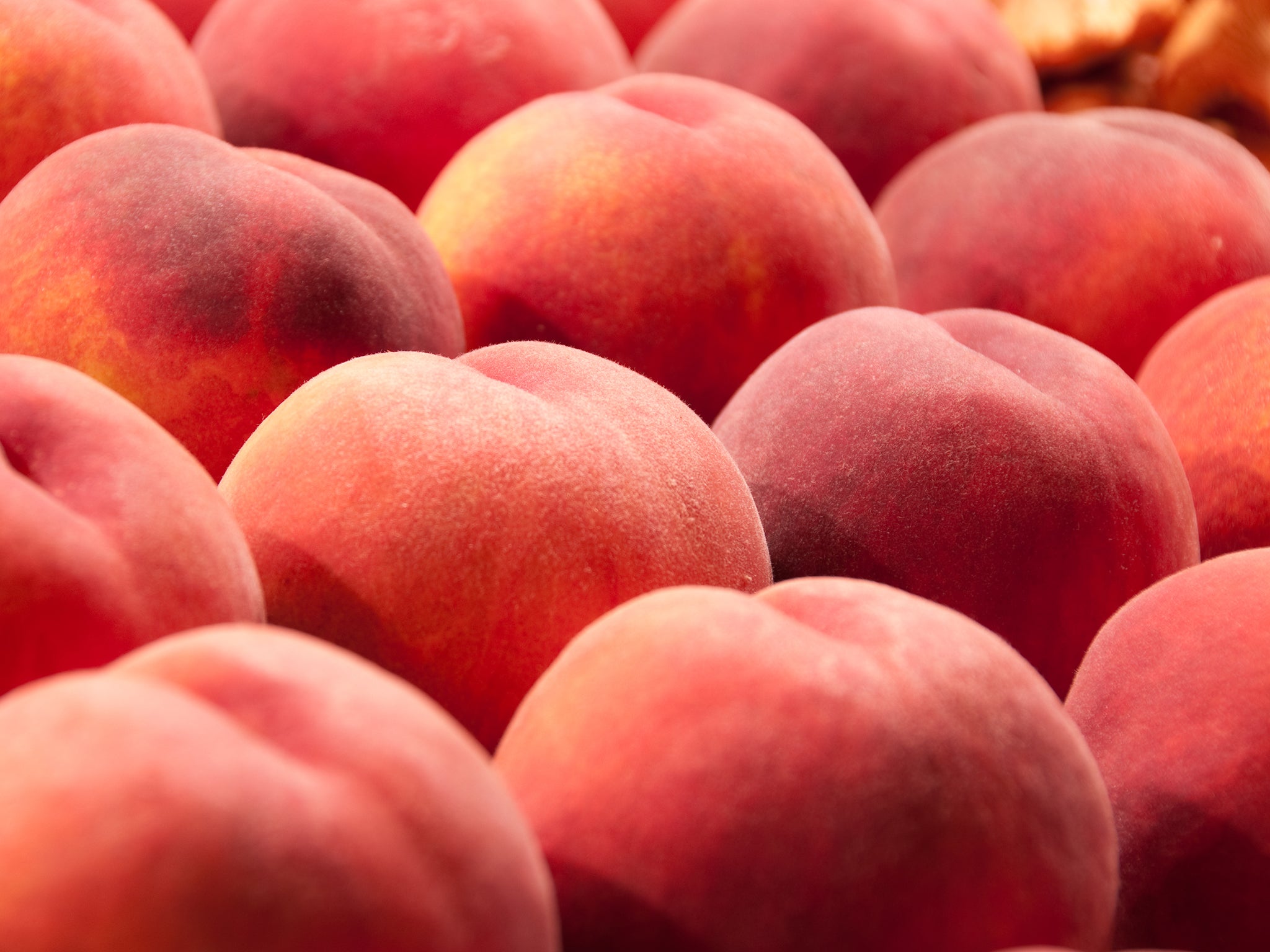
Peaches, celebrated for their sweet, juicy essence and fragrant aroma, are a quintessential summer fruit. In the UK, they reach their peak from late July to September, bringing a burst of flavour to the season’s offerings. Typically the size of a tennis ball, peaches are enveloped in a soft, velvety fuzz. Most varieties display a red-blushed yellow skin with golden yellow flesh, although white peaches feature a pink-blushed cream skin and delicate pinky white flesh. Peaches usually have a spherical shape, often with a slight peak at one end, known as a beak.
When selecting peaches, look for those with a fragrant scent and a yellow hue around the stem, which indicates ripeness. The fruit should be firm but should give slightly under gentle pressure. It’s best to avoid peaches that are excessively hard, bruised, or showing signs of mould. Peaches that are slightly under ripe can be left at room temperature to soften, though they will not become sweeter.
To prepare a peach, cut along the dimple line with a sharp knife and twist the halves apart. You can slice or chop the fruit as needed. If the fuzzy skin is unappealing, it can be rubbed off under cold water. For tougher skins, briefly blanch the peach in boiling water, then plunge it into cold water for easy peeling.
If not using immediately, prevent sliced peaches from browning by brushing them with lemon juice or acidulated water. Store slightly under ripe peaches at room temperature to ripen. Once ripe, keep them in a perforated bag in the fridge for a few days.
Peaches are versatile in the kitchen. Enjoy them raw, incorporate them into fruit salads, pavlovas, or trifles, bake into tarts, or simply serve with vanilla ice cream or cream. They can also be poached or roasted to enhance their sweetness. For a similar alternative, try nectarines, which share many characteristics with peaches.
Doughnut peaches with Parmesan and balsamico
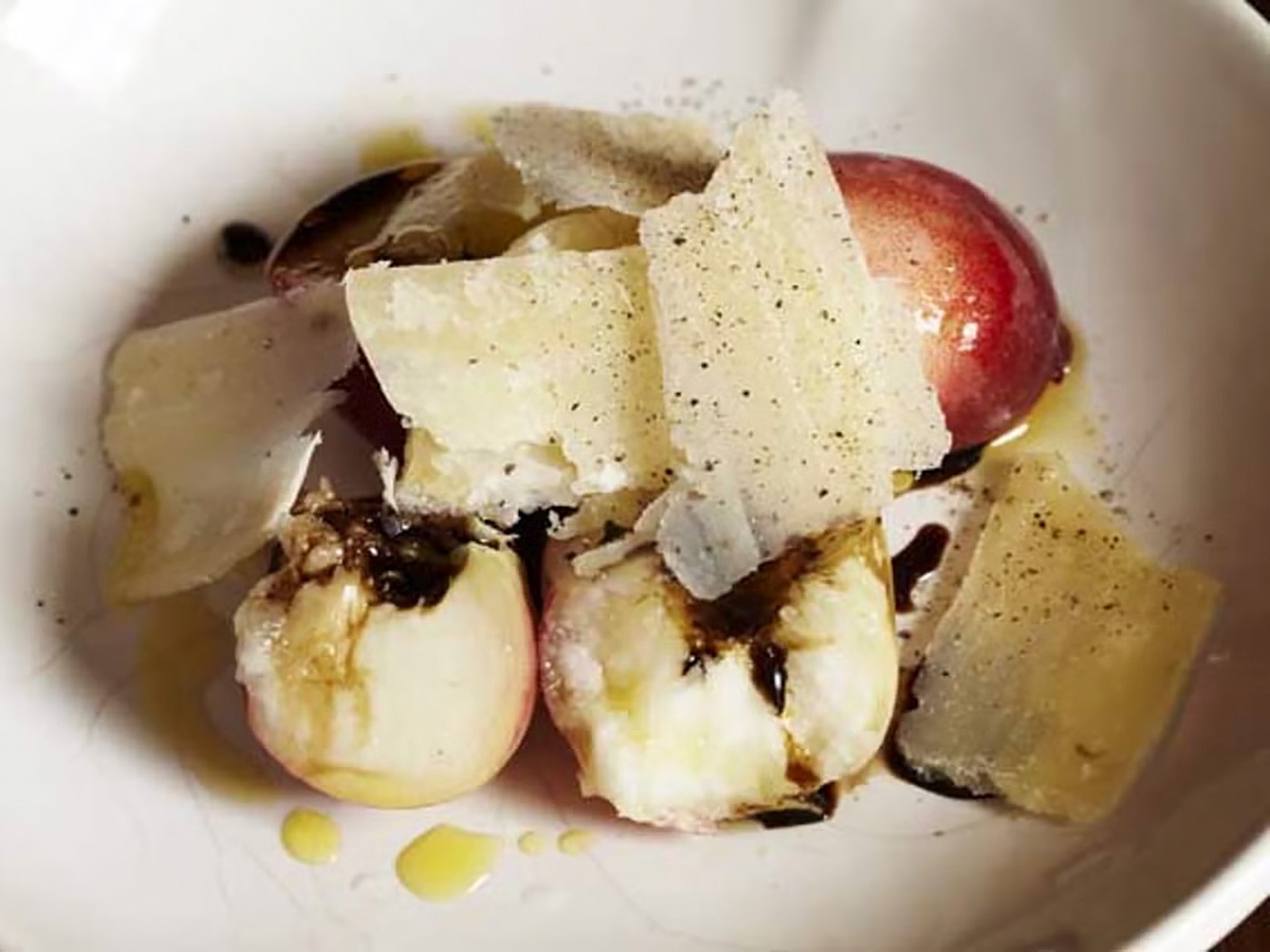
Recipe by: Mark Hix
“I served this dish at a dinner party one night, because I had some of these flat peaches to use up as well as some Parmesan, aged balsamic vinegar and extra virgin olive oil, all of which came from the the Fresh Olive Company after I made a trip to Italy with George Bennell.”
Ingredients:
6 doughnut or flat peaches
80-100g Parmegiano Reggiano
1tbsp or so of aged balsamic vinegar
1tbsp or so of extra virgin olive oil
Method:
1. Halve the peaches; remove the stone and break them into quarters.
2. Arrange on plates, then with a peeler shave the Parmesan into thin slices.
3. Spoon a little balsamic vinegar over the peaches and arrange the Parmesan over.
4. Finish with a little olive oil and black pepper.
Thyme

Thyme is a cherished herb within the culinary world, celebrated for its aromatic qualities and sweetly earthy flavour. It is a staple in European, particularly Mediterranean, cuisine and belongs to the mint family. This herb thrives all year round and features small, grey-green leaves. Among its numerous varieties, the most common in the UK are garden thyme and lemon thyme. Lemon thyme is distinguished by slightly larger leaves and a distinct lemony tang that complements its traditional flavour profile.
Thyme is exceptionally versatile and pairs beautifully with a wide range of foods, including Mediterranean vegetables, eggs, pork, lamb, fish, and game. Its hardy nature allows it to withstand long cooking times without losing its flavour, making it ideal for slow-cooked dishes.
To select the best thyme, opt for sprigs with fresh-looking leaves and pliant stems, avoiding any that appear dry, brown, or mouldy. When preparing thyme, it can be washed and used whole, or the leaves can be stripped from the stems by pinching the top of a stalk and sliding your thumb and forefinger along it, allowing the leaves to break off.
For storage, fresh thyme should be wrapped in damp kitchen paper, placed in a perforated bag, and kept in the fridge, where it can last for up to 5-6 days. Dried thyme, on the other hand, should be stored in an airtight container in a cool, dark place and will remain potent for about 4-6 months.
In cooking, thyme is excellent in stews, stuffings, marinades, and egg dishes like omelettes or scrambled eggs. For those seeking an alternative, herbes de Provence or oregano can serve as suitable substitutes, offering a similar depth of flavour to dishes.
Tuscan thyme baked beans
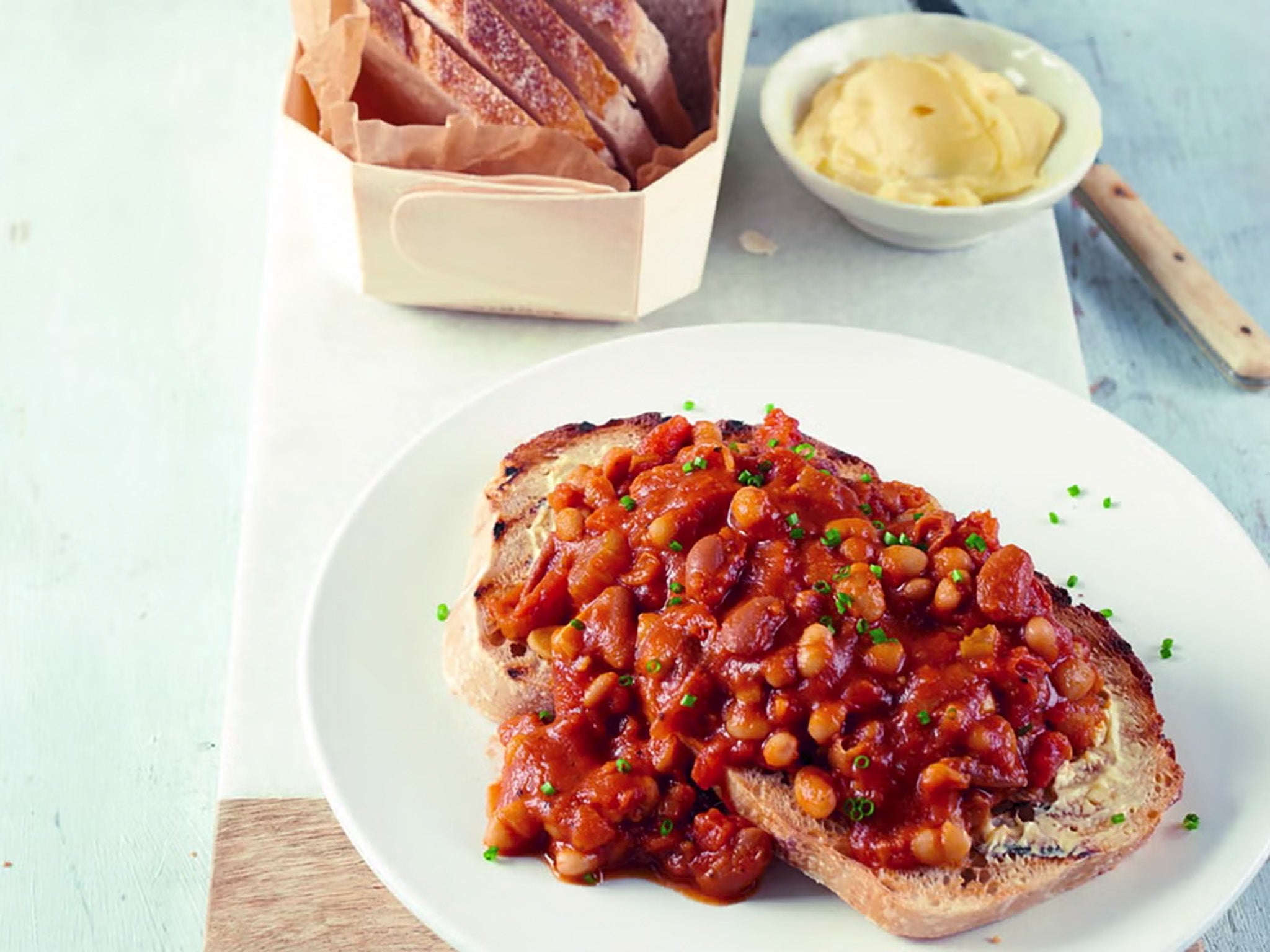
Once you’ve got this simmering away it’s a low maintenance wonder that blips quietly making amazing smells and then provides an incredible supper for everyone. The beautifully Tuscan borlotti bean is the highest plant source of protein. Lots of fibre, B vitamins and folate. This recipe is a treasure and it has a couple of secret, unexpected ingredients that really add another depth of flavour.
Recipe from: Lizzie Loves Healthy Family Food: Delicious and Nutritious Meals You’ll All Enjoy by Lizzie King (Trapeze)
Ingredients:
1 large red onion, sliced
3 tbsp olive oil
1 celery stalk, sliced
3 garlic cloves, sliced
4 or 5 sprigs fresh thyme
1 cup borlotti beans – soaked overnight
1 cup haricot beans – soaked overnight
3 tins plum tomatoes
2 tbsp tomato puree
1 cup chicken stock
1 cup sunblush tomatoes, finely chopped
¼ cup blackstrap molasses
Method:
1. Heat the oil in a large, deep (preferably cast-iron) pan. Add the garlic, onion, thyme and celery and sweat on a low heat for 10-15 minutes until very soft.
2. Add the tinned tomatoes to the pan and turn the heat up as you crush them against the side of the pan to break up into smaller pieces. Bring to the boil and add half of the stock, stirring together. Bubble on a low heat with lid partially covering for 1 hour.
3. Stir very occasionally to prevent sticking. Pour both of the beans into the tomato sauce and the rest of the stock, combining them all. Bring to the boil and then leave on a low simmer again for another 1-1½ hours, until the sauce is thickening up. Add in the molasses and the sunblush tomatoes and leave for another 30 minutes bubbling away.
4. Serve on a baked sweet potato, some crusty bread, or in a bowl by itself.
Join our commenting forum
Join thought-provoking conversations, follow other Independent readers and see their replies
Comments